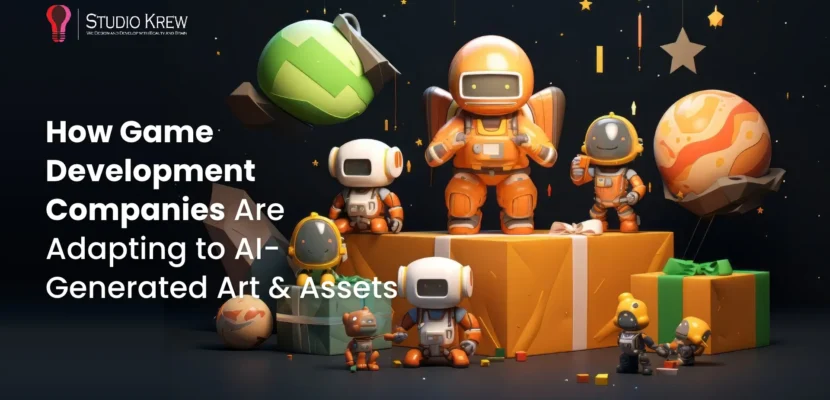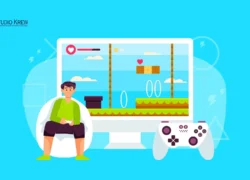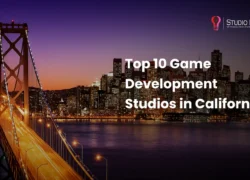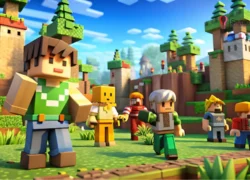In 2025, game development companies are at a turning point as traditional artistry meets the fast growth of artificial intelligence. Creating assets like concept art, 3D models, and animations used to take weeks or months of careful work by skilled artists. Now, AI-generated assets can do the same work in just hours, while still delivering high visual quality.
Whether it’s indie developers working on a new mobile game or AAA studios building huge open worlds, AI has moved beyond being just an experiment. It’s now a key part of the creative process. Tools like Midjourney, Stable Diffusion, and AI-powered 3D modeling engines help studios create concept art, textures, environments, and animations much faster than before. This isn’t just about working faster; it’s a significant shift in how creative ideas become a reality.
At StudioKrew, we’ve seen firsthand how AI is enabling game developers to iterate faster, reduce outsourcing costs, and bring more ambitious ideas to market. However, as with any innovation, the rise of AI in asset creation brings new opportunities, fresh challenges, and critical decisions about how technology and human creativity should work together.
In this blog, we’ll take a closer look at how game development companies are adapting to this AI-powered transformation, the benefits and pitfalls of AI-generated art, and what the future might hold for an industry where imagination meets algorithms.
The Rise of AI-Generated Art & Assets
The conversation around AI game development has been growing for years, but 2025 is the point where theory has truly become practice — especially in the realm of game asset creation. What once sounded like a futuristic experiment is now a daily reality in many studios, big and small.
AI-generated game assets encompass everything from concept sketches to fully textured 3D models, procedural landscapes, environmental lighting, sound design, and animation sequences. Unlike older generation tools that required heavy manual input, today’s AI systems can generate detailed, production-ready outputs from something as simple as a text prompt or reference image.
Part of this rise can be attributed to the rapid evolution of AI tools and platforms.
- Midjourney v6 now produces hyper-realistic concept art that rivals the work of seasoned illustrators.
- Stable Diffusion XL gives studios unprecedented control over art style and consistency.
- AI-assisted 3D generation tools, such as Meshy or NVIDIA’s Omniverse Audio2Face, are enabling studios to create lifelike characters and environments in record time.
The result? Game developers can now go from idea to playable prototype in weeks rather than months. For indie teams, this means competing on a more level playing field with larger studios. For AAA developers, it opens the door to more expansive worlds, richer details, and faster iteration cycles.
This surge is also transforming game art outsourcing in 2025. Rather than sending large volumes of work to external vendors, studios are increasingly using AI to create a strong base layer, then outsourcing only for polishing, detailing, and custom creative work. This hybrid approach significantly cuts costs while keeping the artistic vision intact.
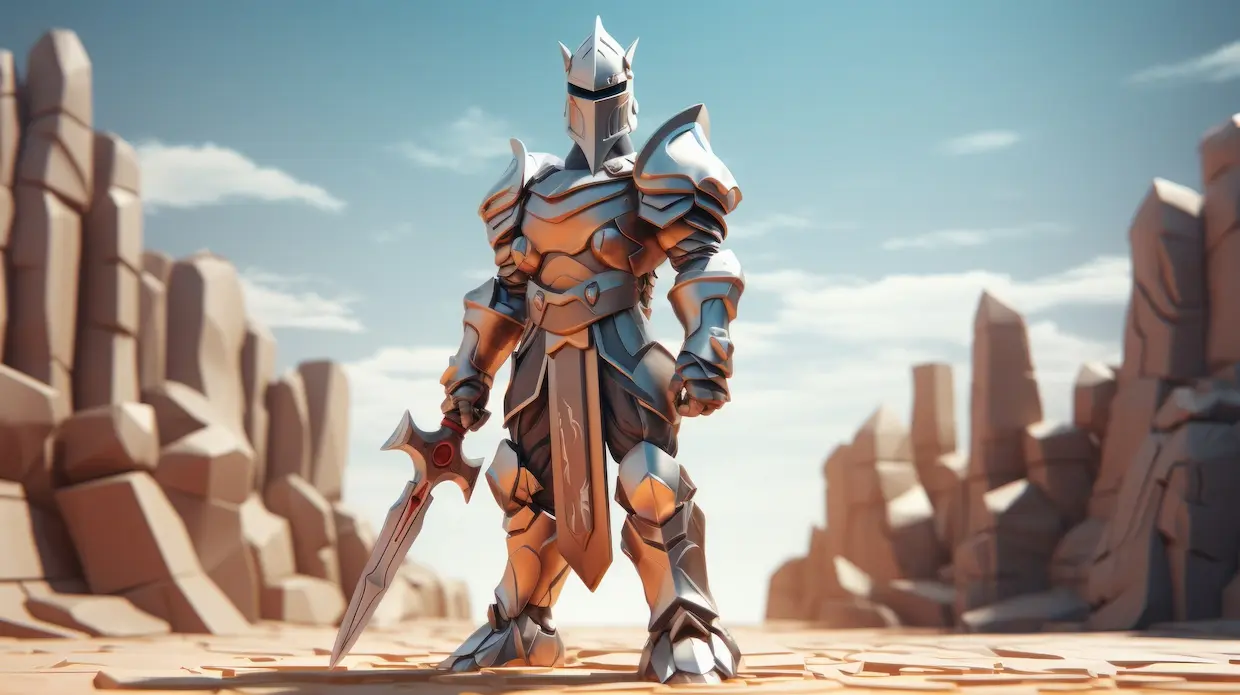
Still, even though AI-generated assets offer speed and lower costs, they aren’t meant to replace human creativity. Instead, they help artists focus on the details, storytelling, and emotional impact that only people can bring to a game. They help clients explore more ideas, iterate faster, and deliver high-quality results without compromising on originality or visual fidelity.
How AI is Changing the Game Development Pipeline
For decades, the game development pipeline followed a predictable rhythm: concept artists sketched ideas, 3D modelers brought them to life, texture artists layered detail, animators gave them movement, and level designers placed them into the world. Each step was highly manual, requiring deep expertise and significant time investment.
Now, AI is part of this process. It doesn’t replace the old way, but makes it faster and more efficient. By using AI tools at every stage, game development companies can work more smoothly, avoid delays, and let creative teams focus on what matters most.
Here’s how AI is making waves across the pipeline:
1. Concept Art Generation
What once required days of brainstorming and iterations can now be completed in hours. AI tools like Midjourney and Stable Diffusion XL can produce dozens of high-quality visual concepts based on a single text prompt. This allows creative directors to explore more ideas quickly, lock down the desired style early, and hand over clear visual guides to the modeling team.
2. 3D Modeling & Texturing
AI-assisted 3D generators are capable of producing optimized game-ready meshes and automatically mapping textures to them. Platforms like Meshy, Kaedim, and Polycam AI reduce the gap between 2D concept art and fully functional 3D models. Artists then step in to refine details, ensuring the asset aligns perfectly with gameplay needs.
3. Animation & Motion Capture
Procedural animation tools powered by AI are replacing expensive motion capture sessions for secondary characters and background NPCs. Tools like Move.AI and NVIDIA Audio2Face can create lifelike movements and facial expressions directly from audio or prompts, drastically reducing both time and cost.
4. Level Design & Environment Creation
With procedural generation enhanced by AI, entire environments — complete with terrain, lighting, vegetation, and props — can be generated in minutes. These AI-generated layouts act as blueprints, which human designers can then polish for narrative cohesion and gameplay flow.
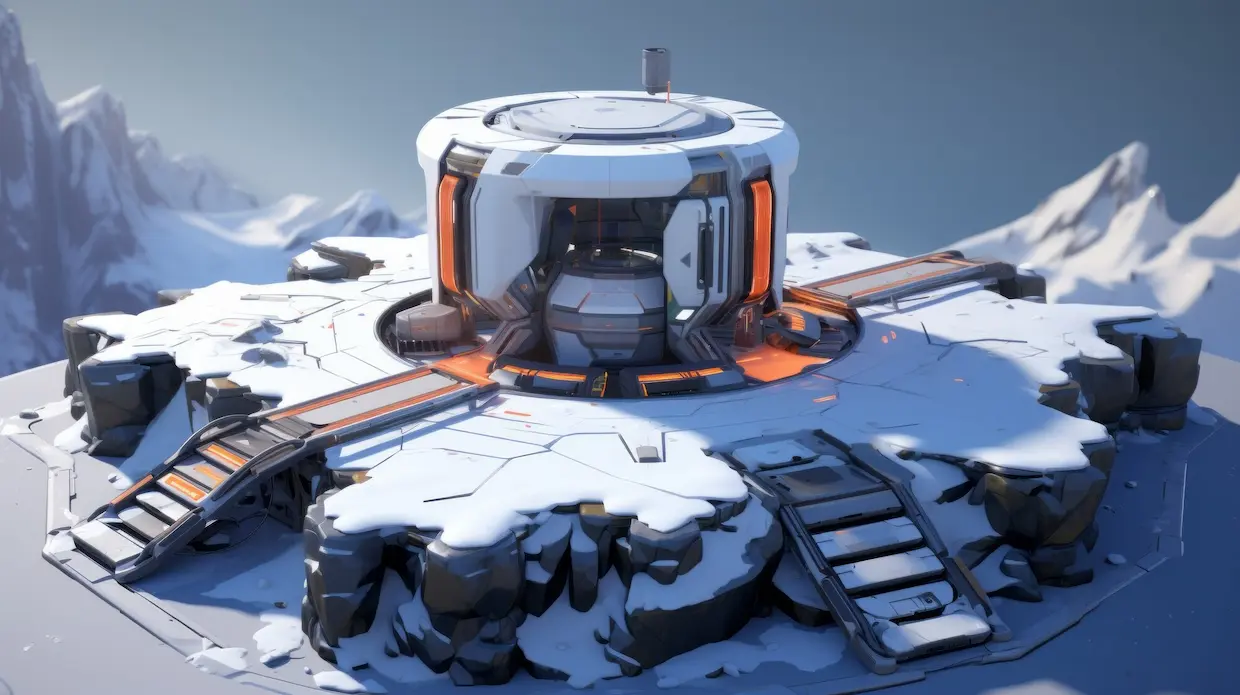
5. Testing & Optimization
AI isn’t just for creating assets — it’s also reshaping QA workflows. AI-driven testing tools simulate player behavior to identify asset loading issues, collision bugs, and optimization bottlenecks before human testers step in.
With AI in the mix, development moves faster and becomes more flexible. Studios no longer need months for early production. They can quickly try out different ideas and deliver projects on tighter deadlines, all while maintaining high artistic quality.
At StudioKrew, we’ve implemented AI workflows that allow us to scale production without sacrificing creativity, enabling our clients to push boundaries in both visual quality and gameplay innovation.
Benefits of AI-Generated Game Assets
AI in game development isn’t just about doing things faster — it’s about doing them smarter. By introducing AI-generated game assets into the production cycle, studios are unlocking a new level of speed, cost efficiency, and creative flexibility that was previously unimaginable.
Here’s how these benefits are transforming the industry in 2025:
1. Speed & Efficiency
One of the most significant advantages of AI-generated assets is the drastic reduction in turnaround time. Concept art that once took two weeks to produce can now be created in under 48 hours. 3D models that required days of manual work can be generated and textured in hours. This allows game development companies to accelerate prototyping and bring projects to market much faster — a critical edge in a competitive industry.
2. Cost Reduction
AI streamlines labor-intensive tasks, reducing the dependency on large-scale outsourcing for every stage of production. Instead of hiring multiple artists for early-stage asset creation, studios can generate AI-driven base assets and then engage specialized talent for polishing and refinement. This hybrid approach cuts outsourcing costs without compromising on quality — an especially valuable shift in game art outsourcing in 2025.
3. Creative Experimentation
AI enables creative teams to explore multiple directions simultaneously. Want to see the same character in three different art styles or environments? AI can generate these variations instantly. This means directors and designers can test ideas without heavy budget implications, leading to more innovative and visually diverse games.
4. Global Collaboration
AI asset pipelines integrate seamlessly with cloud-based collaboration tools, making it easier for game development companies to work with teams and artists across different time zones and countries. Real-time sharing of AI-generated assets ensures that updates, iterations, and refinements happen without long delays.
5. Scalability for Big & Small Studios
Whether it’s a AAA developer building a massive open world or an indie studio working on a small mobile game, AI tools scale effortlessly. For small teams, it levels the playing field; for larger teams, it optimizes large-scale production.
At StudioKrew, we’ve seen AI-generated game assets become more than just a shortcut — they’re a creative amplifier, empowering our teams to deliver richer, more polished games in less time and with smarter resource allocation.
Challenges & Ethical Considerations
While AI game development is unlocking remarkable possibilities, the rise of AI-generated art and assets brings with it a set of challenges that game studios cannot afford to ignore. As with any transformative technology, there’s a fine balance between innovation and responsibility.
1. Copyright & Ownership Issues
One of the biggest grey areas is intellectual property. Who owns an AI-generated game asset — the artist who created the prompt, the studio that commissioned it, or the AI tool provider? Until legal frameworks catch up, game development companies must tread carefully, keeping thorough documentation of asset creation and seeking licenses where required.
2. Maintaining Originality & Artistic Integrity
While AI can generate visually stunning assets, it also has the tendency to “borrow” from existing works in its training data. This can lead to style replication or unintentional plagiarism. To maintain artistic integrity, studios like StudioKrew blend AI-generated base assets with original human-created elements, ensuring every game feels unique and authentic.
3. Quality Control
AI-generated outputs, while impressive, are not flawless. Textures may distort, models may have mesh errors, and animations may lack natural motion. A robust review process led by experienced artists is essential to polish assets before they reach production. In our AI-integrated game development workflow, every AI asset passes through multiple human quality checks.
4. Ethical Use of AI in Art
AI democratizes asset creation, but it also raises questions about job displacement and the devaluation of artistic work. At StudioKrew, we see AI not as a replacement, but as a tool that empowers artists to focus on high-impact creative decisions rather than repetitive manual tasks.
5. Data Privacy & Security
Some AI tools operate via cloud-based services, meaning asset data (including unreleased game content) is processed externally. Without the right safeguards, this can expose studios to leaks or IP theft. This is why game studios integrating AI must ensure that secure pipelines and NDA-compliant platforms are in place.
AI is a powerful tool for creating game assets, but it works best when used thoughtfully, ethically, and with a clear creative vision. Studios that find the right balance between innovation and responsibility will be the ones who succeed in 2025.
AI in Game Art Outsourcing – 2025 Trends
Game art outsourcing has long been a vital part of the industry, enabling studios to scale their production without overloading internal teams. In 2025, AI-generated game assets are revolutionizing the approach to outsourcing, creating a hybrid production model that seamlessly blends automation with human artistry.
Instead of sending entire asset pipelines to external vendors, many game development companies now use AI to create a strong first draft of assets — whether that’s concept art, 3D models, or textures. These AI-generated foundations are then passed on to outsourcing partners for refinement, detailing, and style alignment. This results in:
- Lower outsourcing costs without sacrificing quality.
- Faster project turnaround due to reduced initial creation time.
- More consistent art direction, since AI can enforce pre-defined styles across all assets.
1. Hybrid Workflow Adoption
In this model, AI handles the repetitive and time-consuming parts of asset creation, while human artists focus on high-value, creative detailing. This not only shortens delivery timelines but also enables outsourcing vendors to handle a broader range of projects simultaneously.
2. Demand for AI-Trained Artists
Studios are increasingly looking for outsourcing partners whose teams are trained in AI-assisted tools. Being able to refine, troubleshoot, and customize AI outputs is now a core skill for modern concept artists, 3D modelers, and animators.
3. Style Consistency Across Multiple Vendors
One of the biggest challenges in outsourcing is maintaining a uniform visual style when multiple vendors are involved. AI-powered style transfer tools help maintain brand and aesthetic consistency, regardless of where assets are produced.
4. Strategic Partnerships Over Transactional Outsourcing
Rather than relying on one-off contracts, game studios are forming long-term partnerships with vendors that can integrate seamlessly into AI-powered pipelines. This ensures a smooth handoff between in-house teams, AI-generated work, and outsourced refinements.
At StudioKrew, we’ve adopted an AI-driven outsourcing approach in our AI-integrated game development services, enabling our clients to enjoy the cost benefits of AI automation while still achieving the high-quality artistry that only human expertise can deliver.
Case Studies: AI in Action
While AI-generated game assets are making headlines, their true value is best understood through real-world applications. Here are examples of how studios — including StudioKrew — have leveraged AI in production to cut timelines, reduce costs, and enhance creativity.
Case Study 1: Indie Studio – Building an Environment in Just 14 Days
A small indie team with limited resources needed to create a rich, post-apocalyptic environment for their survival game. Using AI-assisted environment generation tools like Stable Diffusion for concept art and NVIDIA Omniverse for terrain modeling, they developed an entire playable environment in just two weeks — a process that would have traditionally taken three months. Human artists then refined the AI output to align with the game’s narrative tone.
Impact:
- 70% reduction in production time — enabling the team to reallocate resources to gameplay innovation.
- Increased budget allocation for gameplay mechanics instead of asset creation.
Case Study 2: AAA Studio – AI Motion Capture for NPCs
A well-known AAA developer used AI-driven motion capture (via Move.AI and Audio2Face) to animate background NPCs in a massive open-world RPG. Instead of hiring multiple actors and scheduling extensive motion capture (MOCAP) sessions, they generated hundreds of unique animations from text prompts and audio scripts.
Impact:
- Saved hundreds of hours in mocap studio time.
- Added diverse, lifelike movement patterns to background characters, enhancing immersion.
Case Study 3: StudioKrew – AI-Assisted Prototyping for a Multiplayer RPG
In a recent AI-integrated game development project, our team at StudioKrew worked on a multiplayer RPG with an ambitious art style. We used AI to:
- Generate multiple concept art variations within hours for client review.
- Create base 3D models for characters and weapons using AI mesh generators.
- Speed up environment layout creation with AI-powered procedural tools.
Our human artists then layered in detail, customized textures, and fine-tuned every asset to meet gameplay requirements.
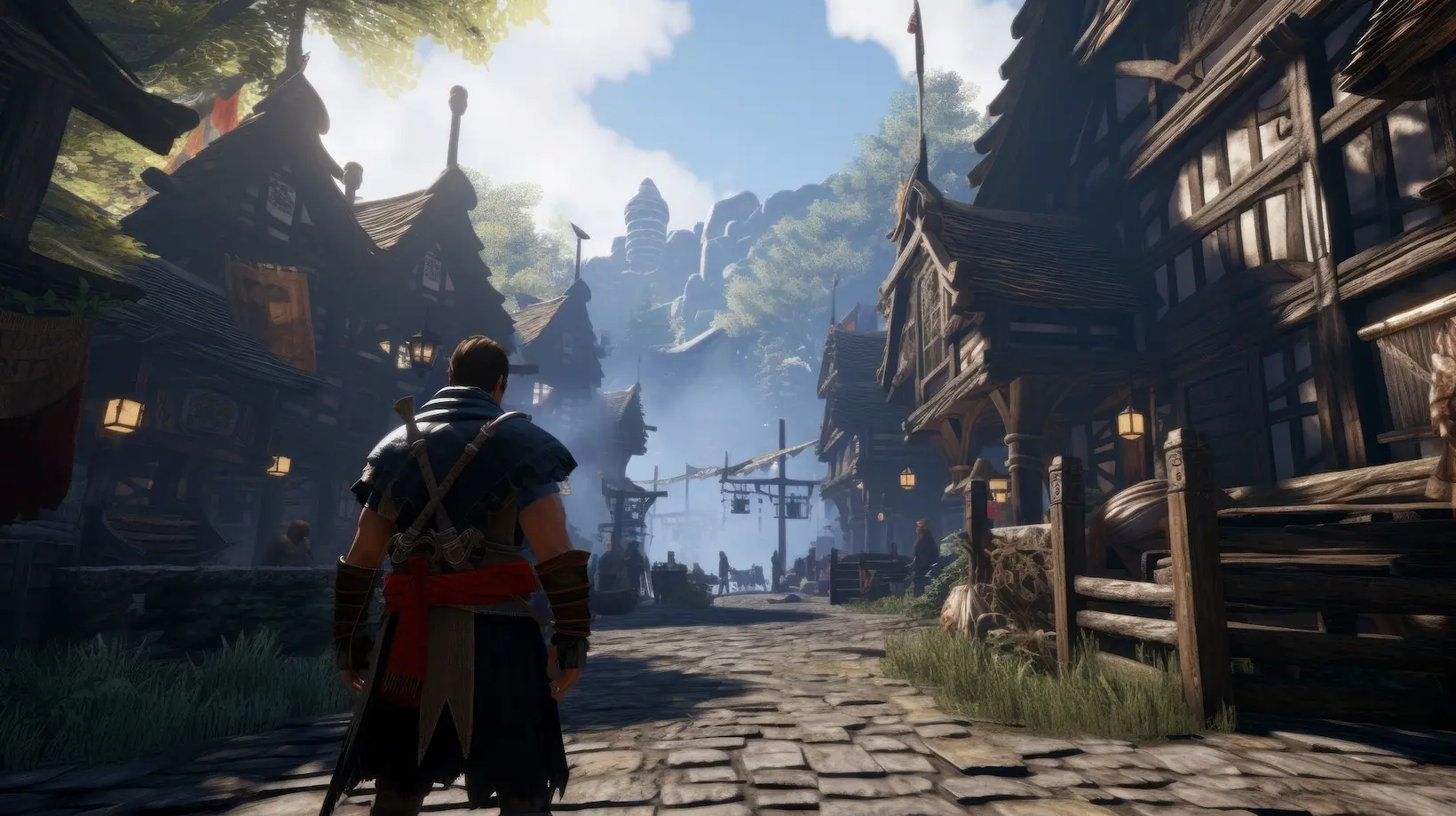
Impact:
- Cut early prototyping time by 50%.
- Allowed the client to preview multiple creative directions before committing to production.
- Maintained originality while using AI to handle repetitive tasks.
These examples show that AI isn’t just a future trend in gaming—it’s already shaping the industry today. The most successful studios will be those that combine AI’s speed with human creativity, making sure their games are both efficient and full of heart.
The Future: AI + Human Creativity
The narrative that AI will “replace” artists has been circulating for years, but in the gaming industry, the more accurate vision of the future is one of collaboration, not replacement. The studios that will stand out in the years ahead will be those that understand how to merge AI efficiency with the emotional depth and storytelling skills of human creators.
Here’s what we see coming between now and 2030:
1. Real-Time Asset Generation Inside Game Engines
Imagine a level designer using Unreal Engine or Unity and generating procedural environments in real time with an AI prompt — adjusting weather, time of day, and terrain instantly during gameplay. This level of flexibility could significantly accelerate world-building for both AAA and indie games.
2. Fully Procedural Worlds Driven by AI
As AI becomes more capable, we’ll see entire game worlds generated dynamically, with textures, NPCs, quests, and environmental details evolving based on player choices. This opens the door to infinite replayability and emergent storytelling.
3. Smarter AI for Art Direction
In the future, AI could act as an assistant art director — not only generating assets, but also ensuring style consistency across every piece of content. This could help large game studios manage massive projects without losing visual cohesion.
4. Ethical AI Frameworks for Game Art
Industry-wide guidelines will become standard to address copyright, originality, and fair use of AI-generated art. Studios that adopt transparent AI pipelines will gain the trust of both players and artists.
5. The Rise of AI-Enhanced Creative Roles
We’ll see new job titles emerge — like “AI Asset Curator” or “Procedural Art Director” — where human creativity and AI capabilities intersect. Studios like StudioKrew are already preparing for this shift through AI-integrated game development R&D.
In the end, the future of AI in game development isn’t about replacing creativity. It’s about giving artists more freedom. When AI handles repetitive tasks, artists can devote more time to world-building, storytelling, and the emotional elements that make games truly memorable.
Why StudioKrew is Leading in AI Game Development
In a rapidly evolving industry, not every game development company is equipped to fully harness the potential of AI-generated assets. At StudioKrew, we’ve made AI a core part of our creative and technical workflows — not as a gimmick, but as a practical, results-driven enhancement to the way we build games.
Here’s what sets us apart in 2025:
1. Proven AI-Integrated Development Pipelines
Our AI-integrated game development process blends machine efficiency with human artistry. From concept art to 3D modeling, animations, and procedural environments, we ensure AI outputs are refined by skilled artists for visual quality, gameplay fit, and originality.
2. Multi-Platform Expertise
Whether it’s PC, console, mobile, VR, or AR, we design asset pipelines that adapt seamlessly to platform-specific requirements — ensuring AI-generated content works flawlessly across all environments.
3. Dedicated R&D for AI in Gaming
We invest in ongoing research to explore emerging AI tools, from advanced procedural generation systems to AI-driven animation solutions. This keeps our clients ahead of the curve and ensures their games benefit from the latest innovations.
4. Custom Solutions for Every Client
Every game project has unique needs. We don’t take a one-size-fits-all approach — we tailor AI integration to match each project’s art style, production timeline, and budget. This approach is effective whether we’re collaborating with independent studios or partnering with established game studios worldwide.
5. End-to-End Support
From pre-production ideation to post-launch LiveOps, our team provides full-cycle game development services. AI is just one of the many tools we utilize to expedite delivery, lower costs, and push creative boundaries.
When you work with StudioKrew, you’re not just hiring a game development company — you’re partnering with a team that knows how to make AI work for your vision, not the other way around.
Final Thoughts & Call to Action
The growth of AI-generated game assets in 2025 isn’t just a passing trend. It’s a significant shift in how games are envisioned, designed, and developed. From faster concept art to more affordable outsourcing, AI is changing the creative process and opening new doors for game developers everywhere.
But as we’ve explored, AI is not a magic button. It works best as a collaborative partner — a tool that amplifies human creativity rather than replacing it. The studios that will define the future are those that combine the efficiency of AI with the storytelling depth, emotion, and originality that only human artists can deliver.
At StudioKrew, we’re committed to leading this change. With our AI-powered workflows, experience across platforms, and focus on quality, we help clients bring their ideas to life quickly and affordably—while keeping the creative spirit that makes games special.
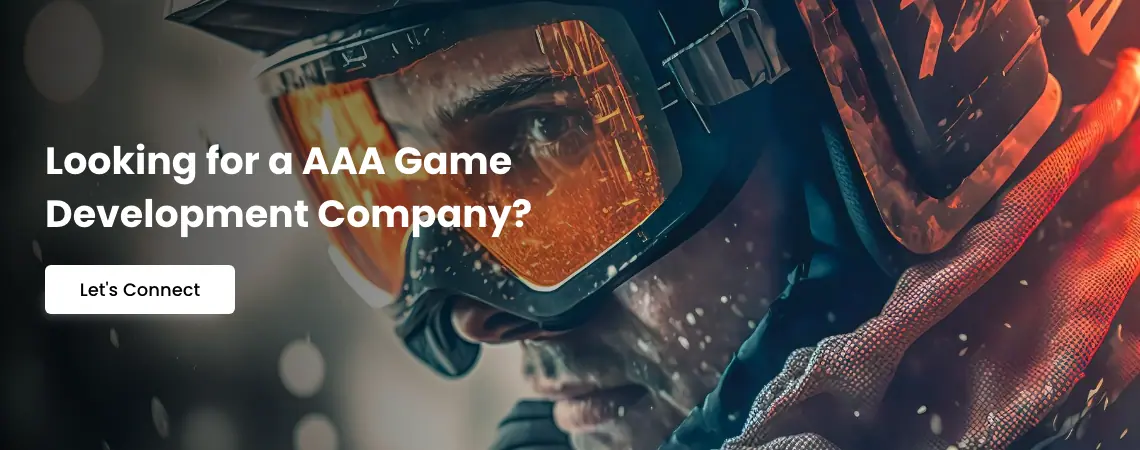
🚀 Ready to create your next game with AI-powered precision and human-crafted quality?
Let’s turn your vision into a reality. Connect with our expert game development team today and start building the future of gaming.
